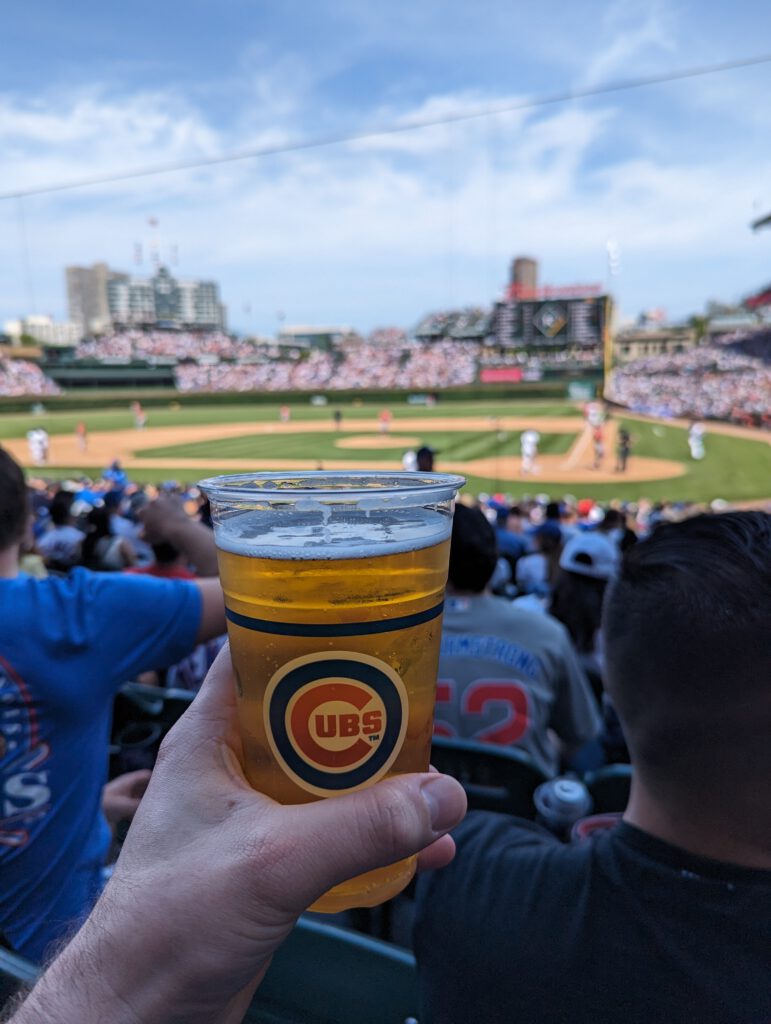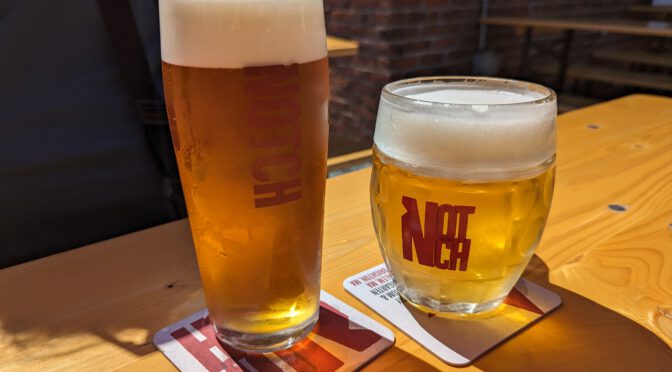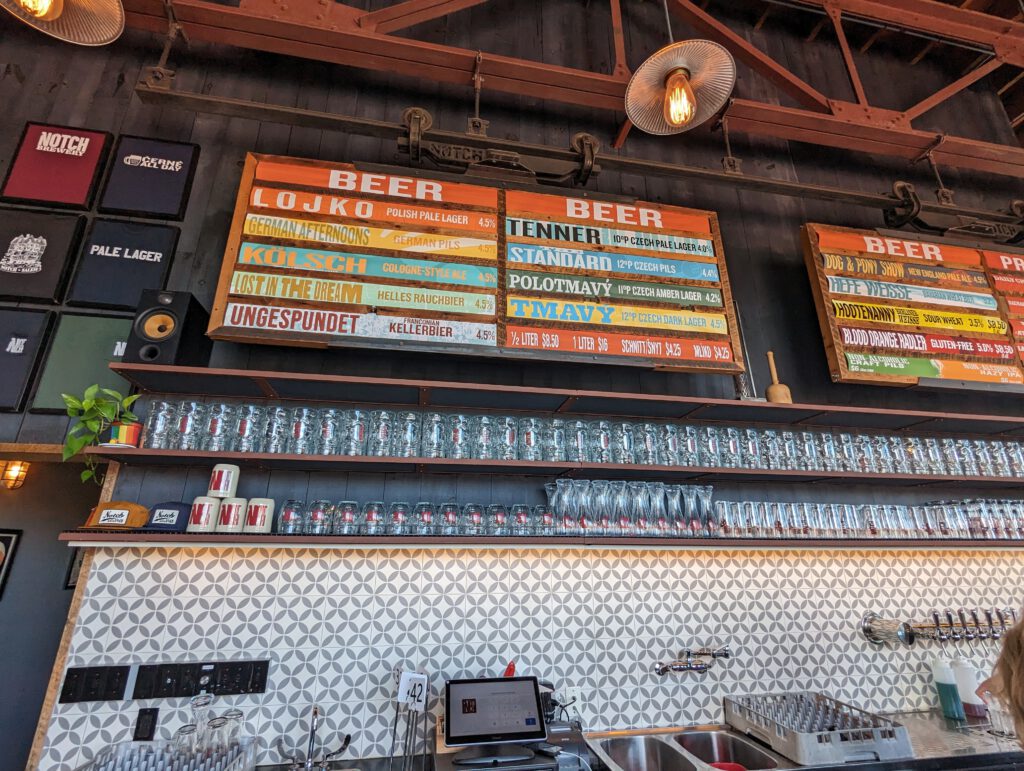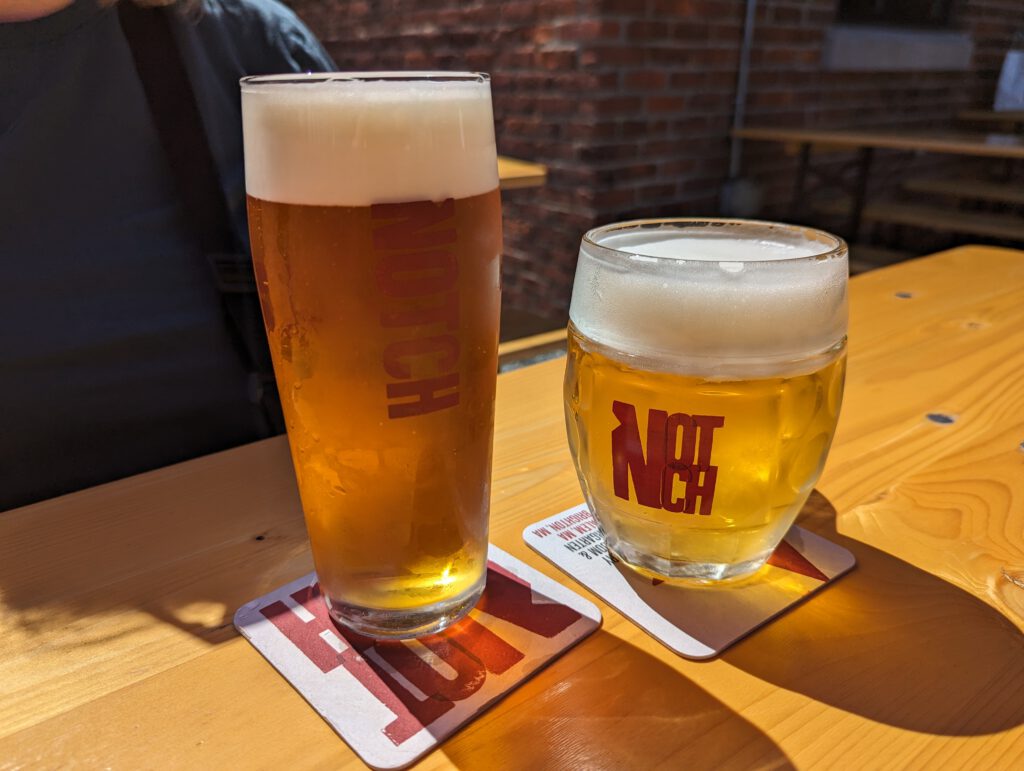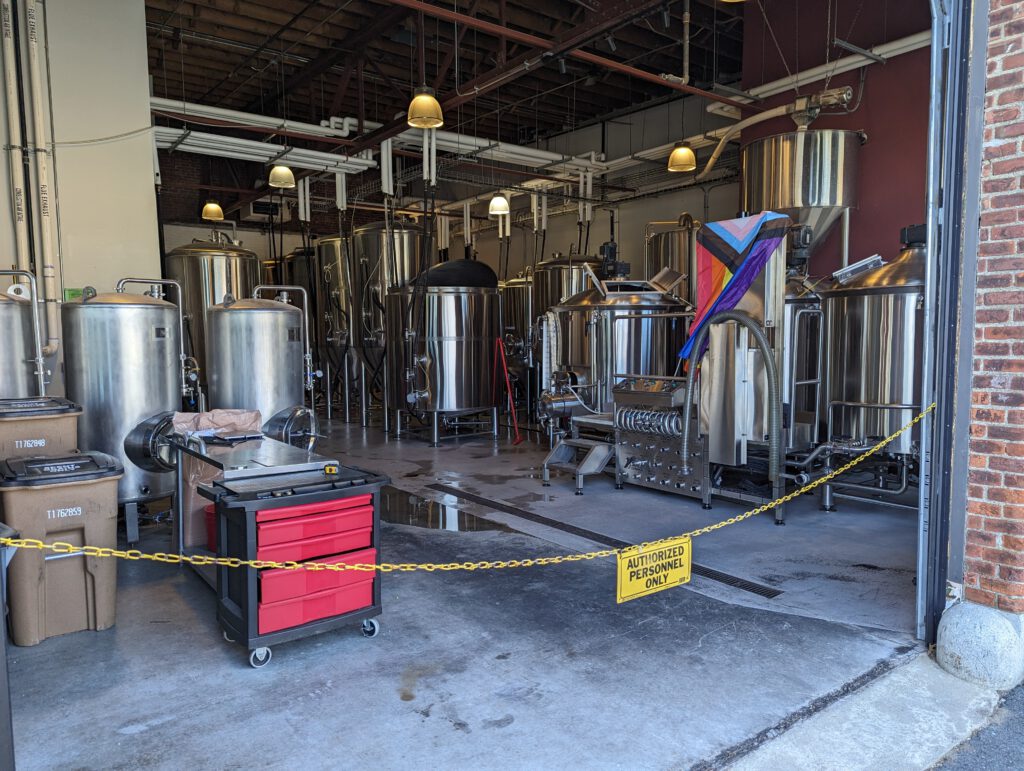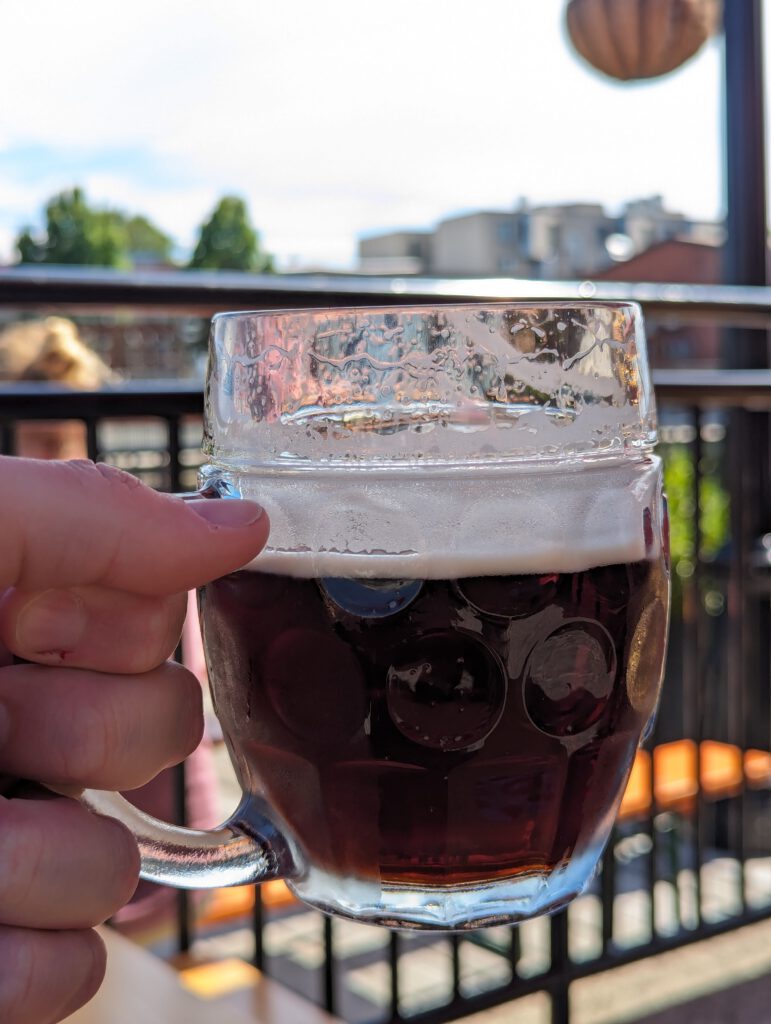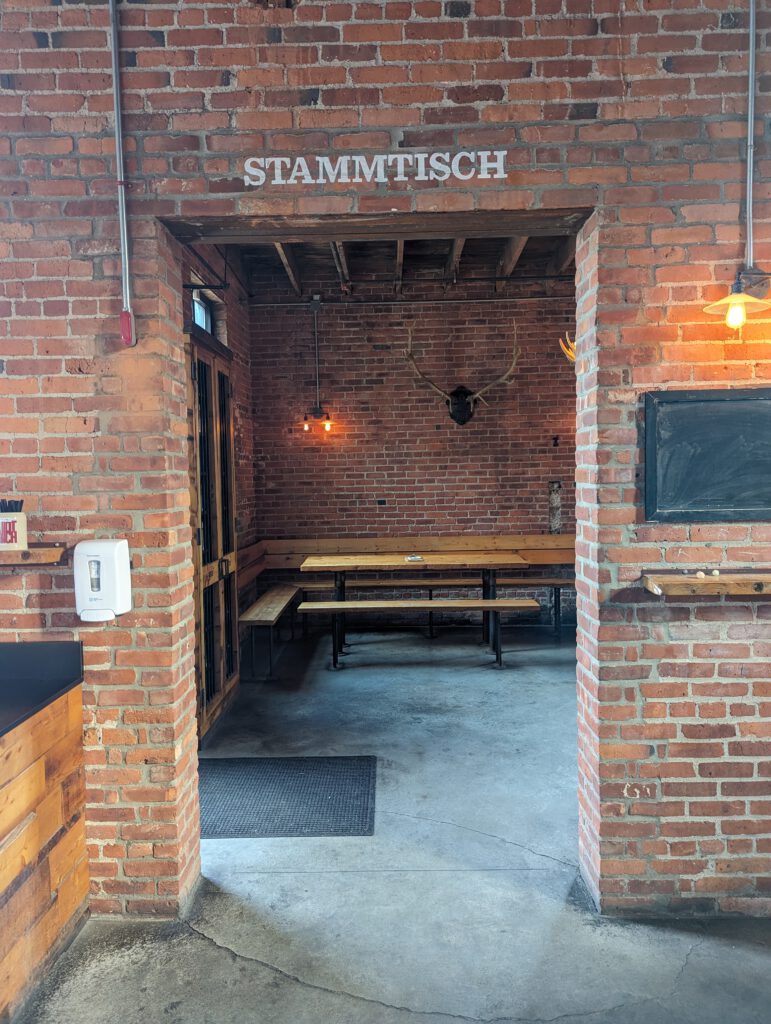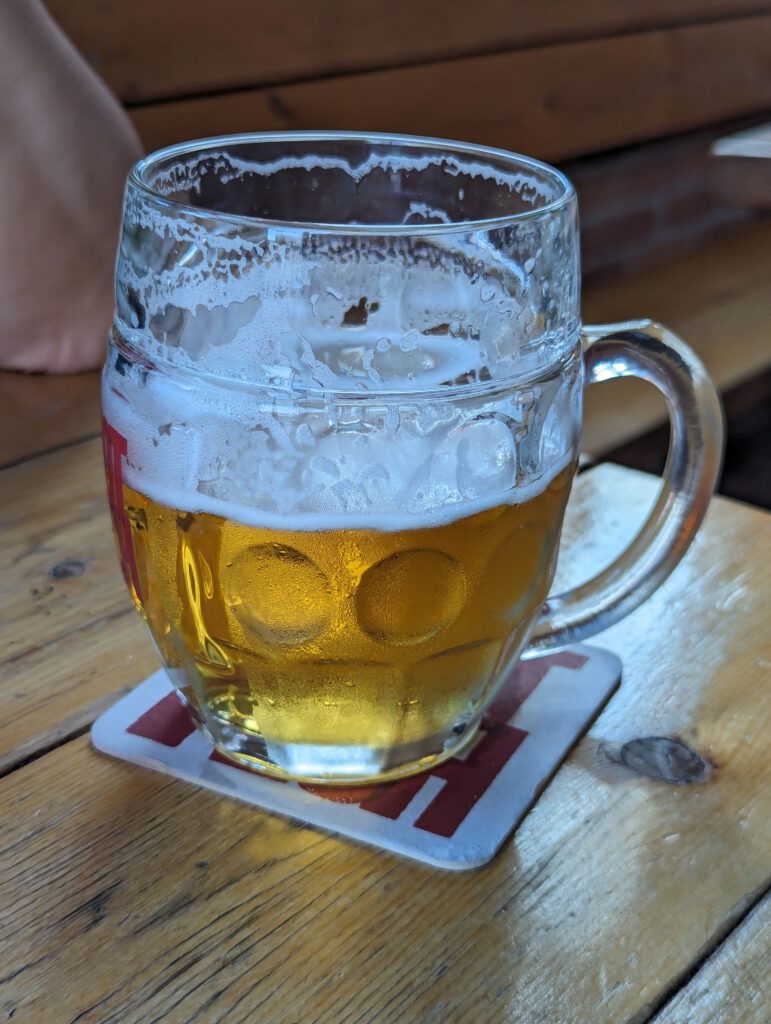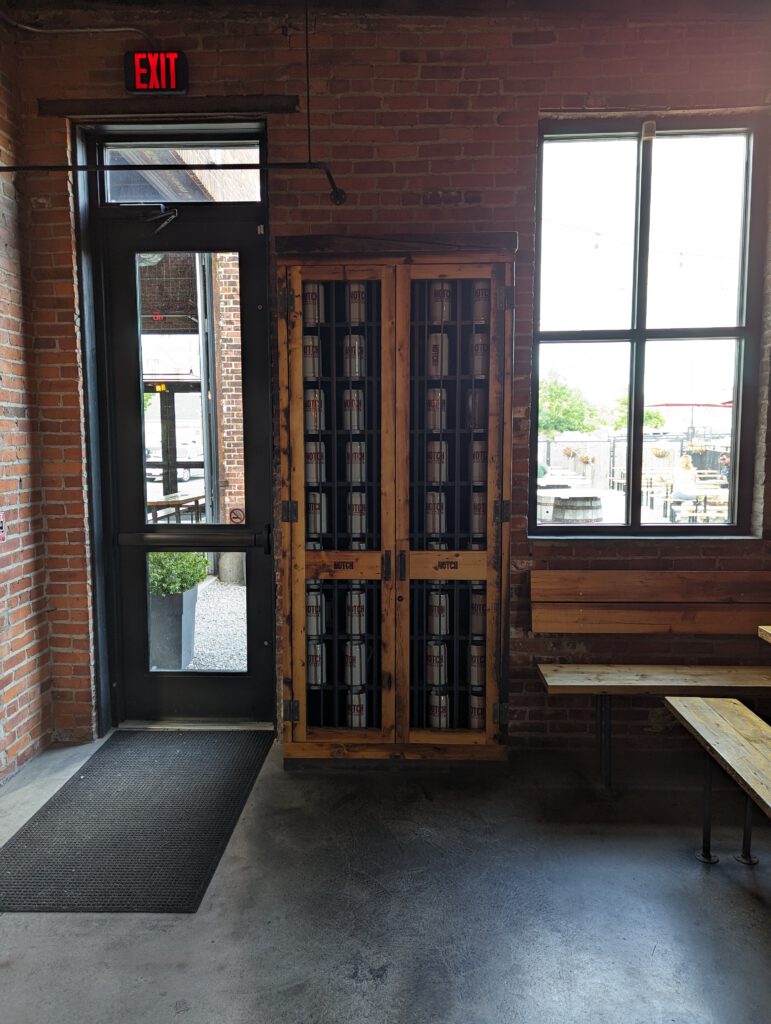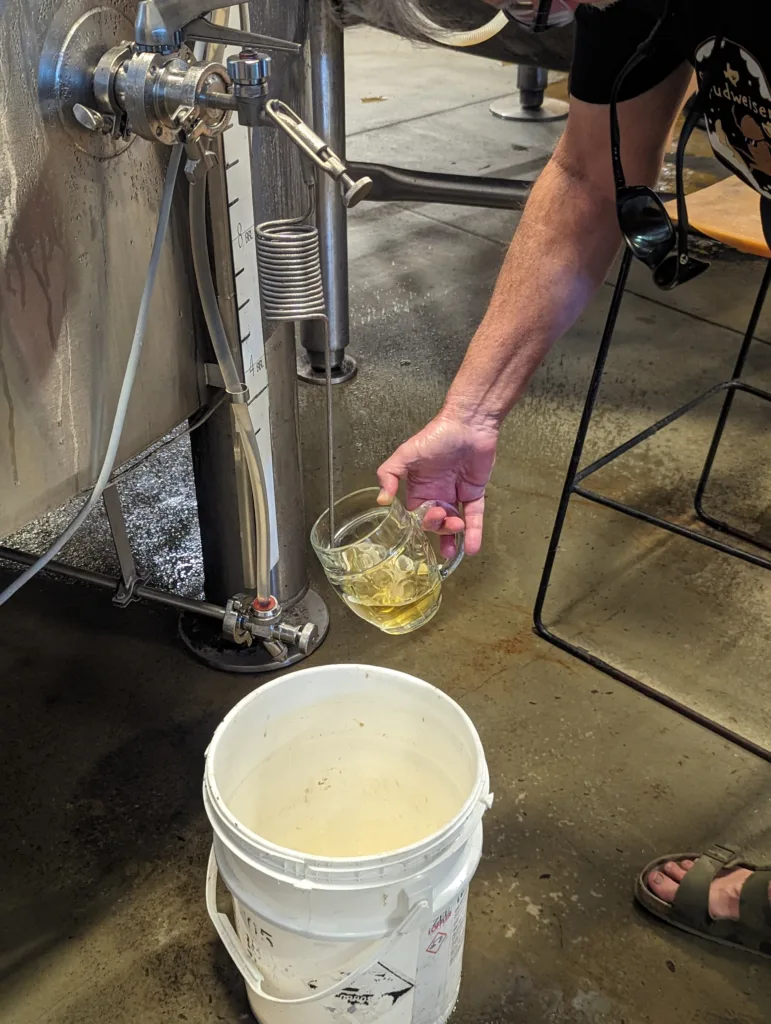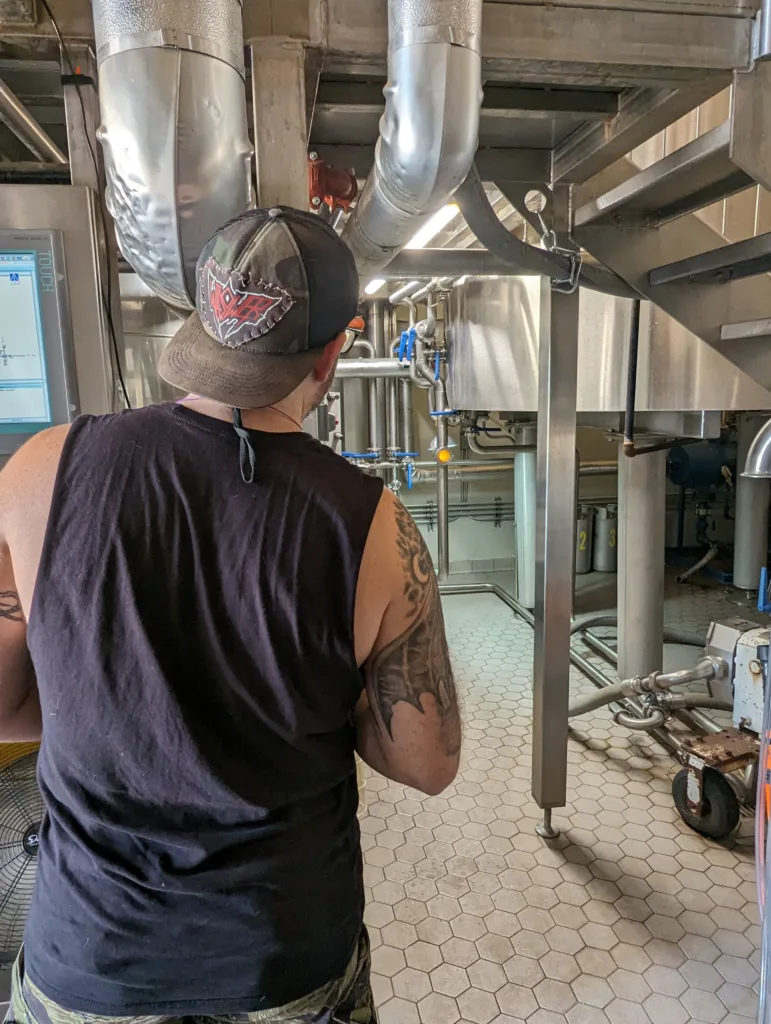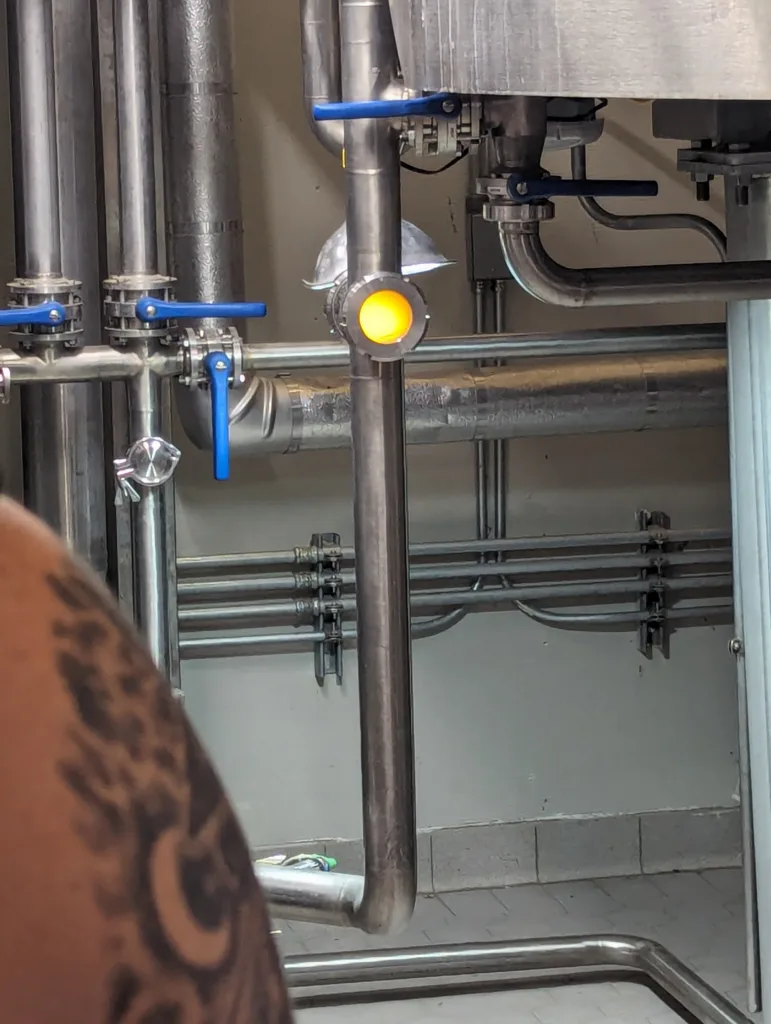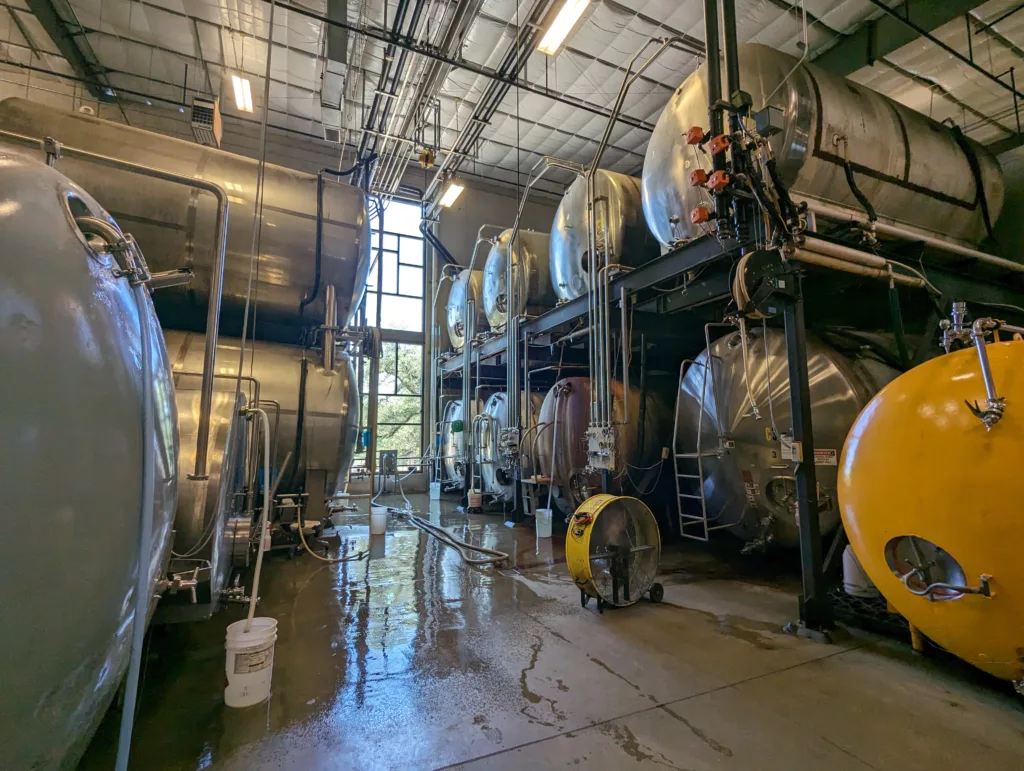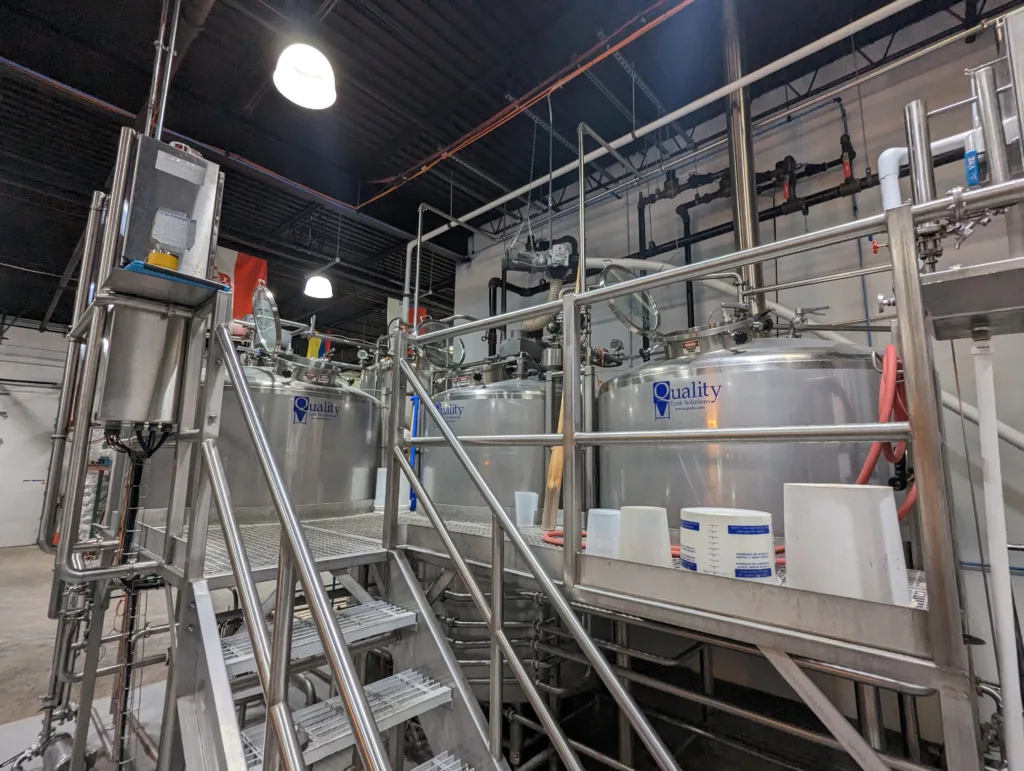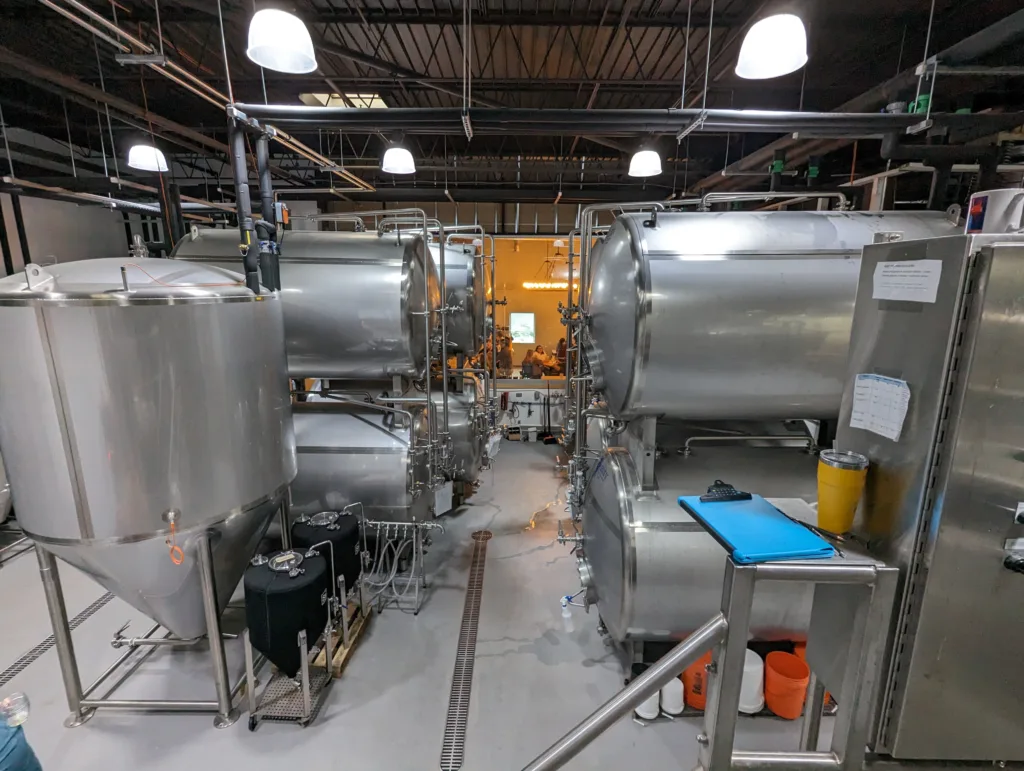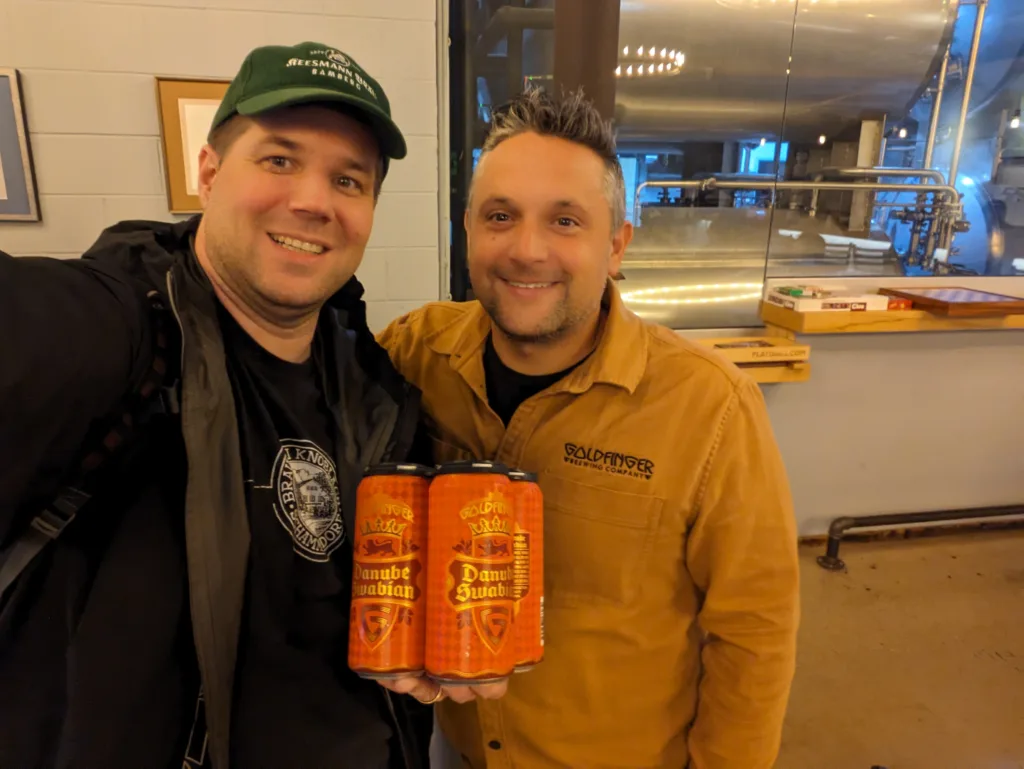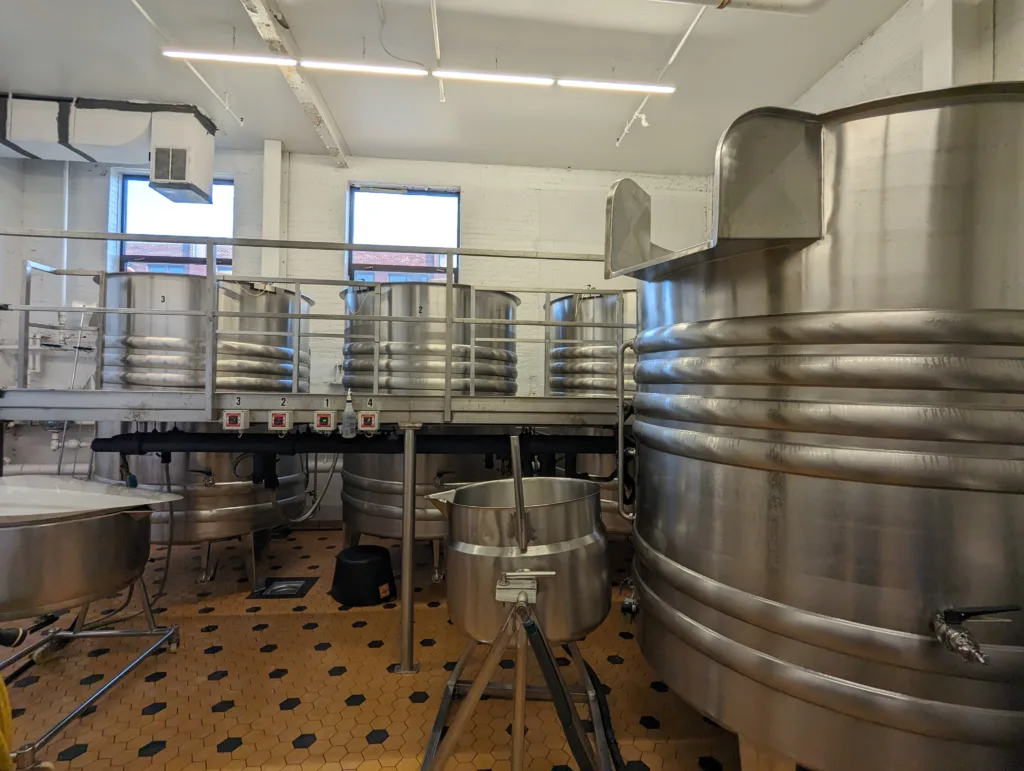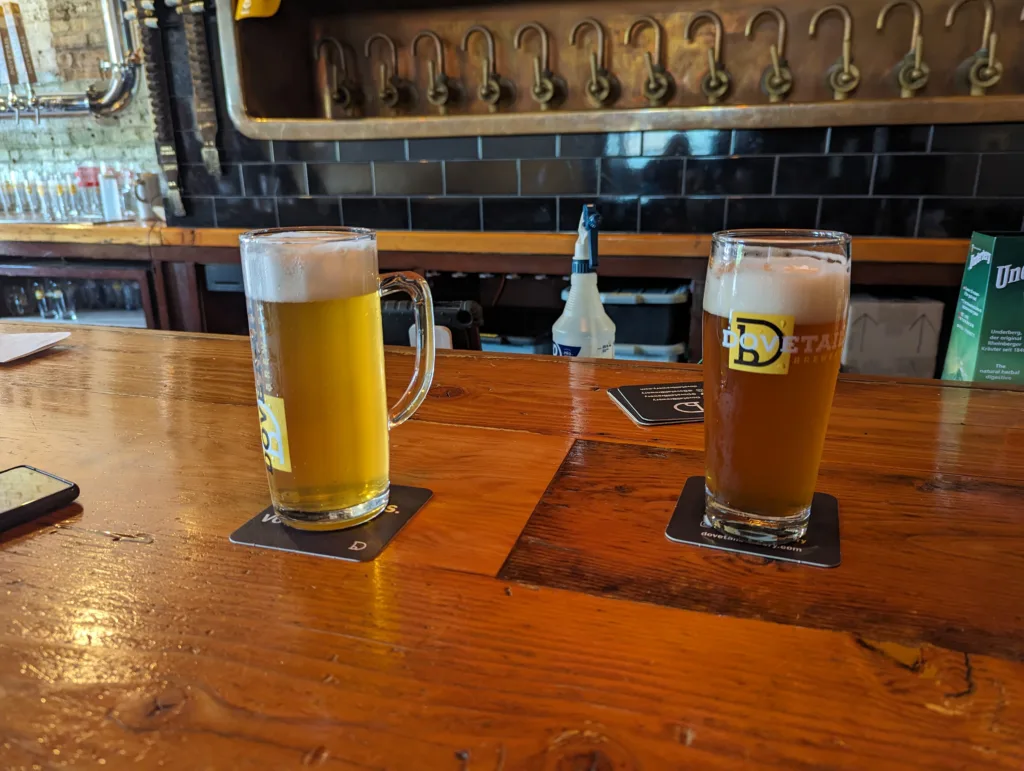In this addendum to my series of lager beer that I discovered in the US, I will cover all the lager beers I had that we tried but weren’t quite top tier.
The Perch, Wicker Park, Chicago
After 9 hours of non-stop flying from Zürich to Chicago, a long wait in immigration, an excruciatingly long Uber drive from the airport to our Airbnb and generally being awake for 22 hours straight, we just wanted to have a quick bite and maybe a beer or two. We mainly chose Perch because it was close to where we stayed and the food seemed good, but it turned out the beer was also great. I enjoyed their Woodpecker Pils, which was dry and bitter enough, and their Cream Ale, brewed from 6-row malt, corn and Saaz hops (I know, not a lager). The latter was refreshing, slightly husky from the 6-row, with a distinct taste of corn that I enjoyed a lot.

Old Style at Wrigley Field
I was told Heileman’s Old Style was the iconic beer at Wrigley Field when watching baseball. I had it, it was okay, probably wouldn’t order it again. What fascinated me more about Old Style was how it was advertised around Chicago, like this sign in a dive bar’s window in Wicker Park:
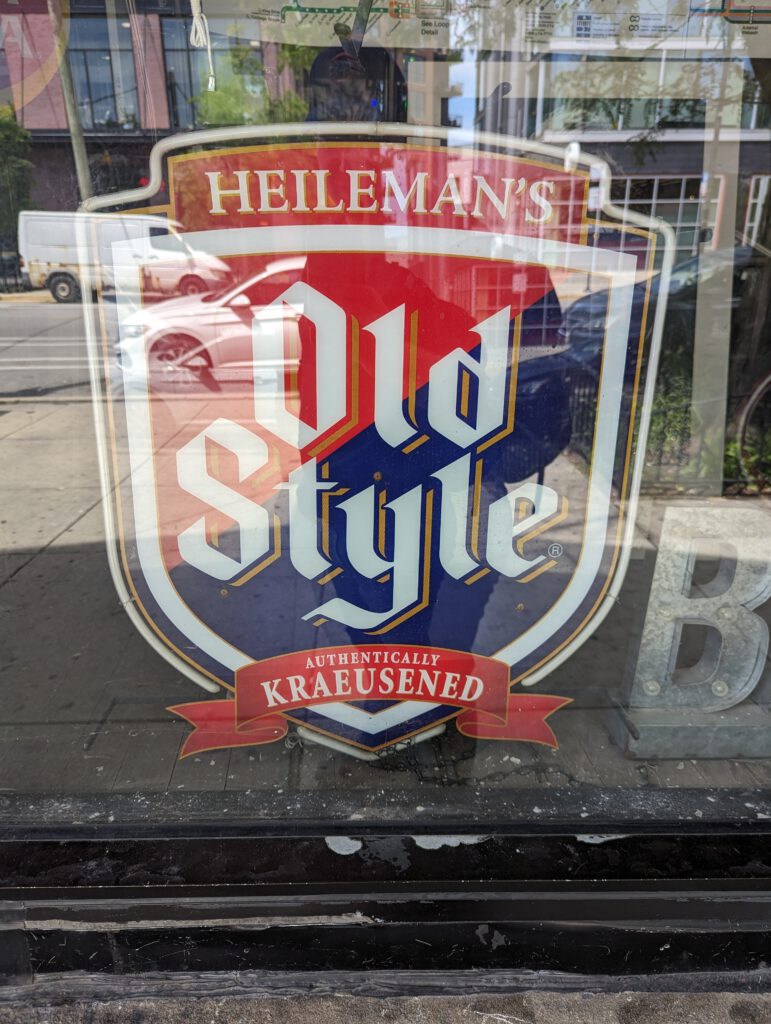
Who would know these days what kraeusened means if they’re not somehow involved in or adjacent to the brewing industry?
Old Irving Brewing Co., Irving Park, Chicago
If we hadn’t been invited by my friend Colin to meet up there for drinks and food, we wouldn’t even have thought about going to Old Irving Brewery. I unfortunately forgot to take pictures that day (only took some of the Malört we had later on…), but both the beer and the food were really good. Both the Maibock and the Helles were really solid, but the highlight was probably the food. While most of the beers they brew aren’t exactly what I drink, I’d probably come back for the relaxed atmosphere, the food, and the lagers.
Meanwhile Brewing Co., Austin
After our fantastic experience at Live Oak, we also wanted to see other breweries. One stop was Meanwhile. We didn’t exactly know what to expect, other than that we knew that they had some lagers on tap. Louise really enjoyed their Helles, while my first beer was the Polotmavý. It wasn’t the best version of the style, too little body and too dry for my taste, but in the grand scheme very clean and refreshing (which was very necessary that day). My second beer was Gift of Gab, a Dry Nitro Stout, which was pretty amazing. Very creamy, super drinkable and surprisingly refreshing. Not exactly like Guinness, but slightly more flavourful while retaining that same drinkability.
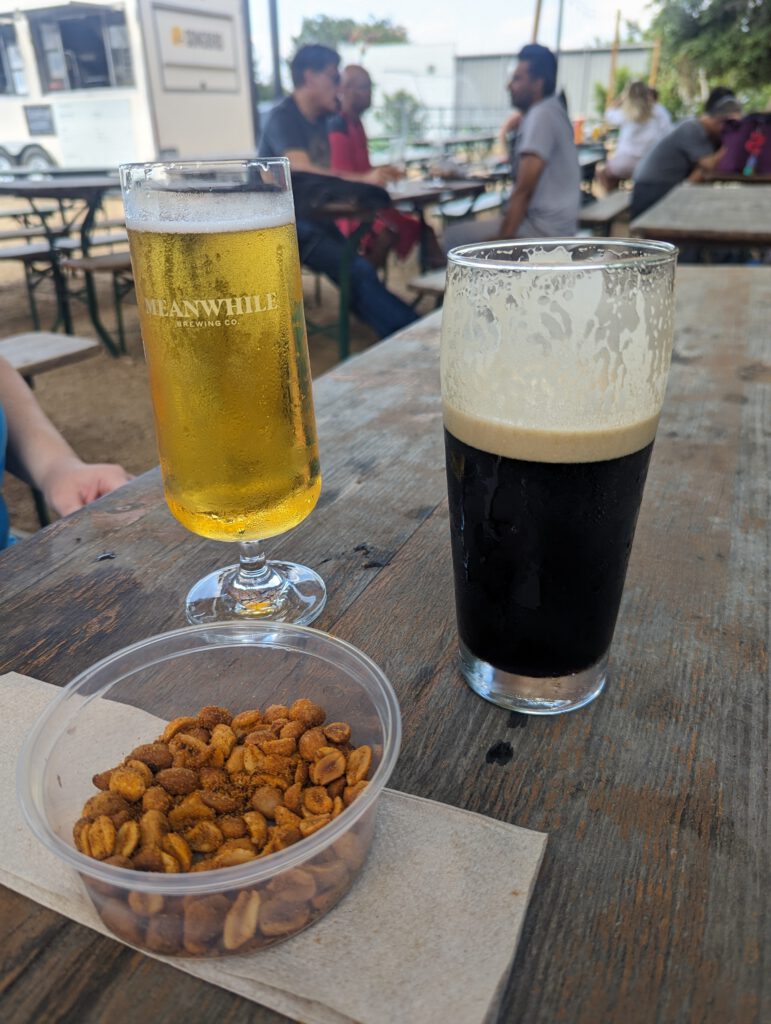
Distant Relatives has their barbecue food truck directly at Meanwhile, and while we didn’t want to eat any barbecue there as we still had leftovers from Franklin Barbecue and Micklethwait at home, we still got their smoked peanuts which were a fantastic beer snack. In retrospect, we really regret not at least trying some of their smoked chicken or ribs.
The beer garden at Meanwhile also felt the most Texan: a relaxed atmosphere among trees with shade, while the seating arrangement was mostly not trying to imitate a Bavarian beer garden and the ground was soft grass and wood chip mulch, not gravel.
Austin Beer Garden Brewing Co., Austin
After our visit at Meanwhile, we popped over to Austin Beer Garden Brewery. Pilsner, Helles, Pre-Prohibition Pilsner and Pale Ale were all very good. The free water tasted of mould, the people that were sat next to us called it “that Texas taste.” Some of the beers were sold as 16 floz (473 ml) but were poured into 0.5 liter Seidla glasses with very little foam. We guesstimated by how much it was overpoured, and think that it was at least an extra 20% of free beer. Also, when we were there, most other customers seemed to have been there for some country music and dancing thing. When that ended, the whole place very quickly emptied.

Macro Lagers at Dive Bars
Of course I had to try all the macro lagers I’ve been warned about it, so I had Coors Light, Coors Banquet, Lone Star, Busch Light and Natural Light. They all tasted… fine. They were all technically flawless beers, just bland and boring, but still fulfilling a purpose. At strengths around 4% ABV, I’d rather have one of these than a 6% IPA, especially with the Texas heat.

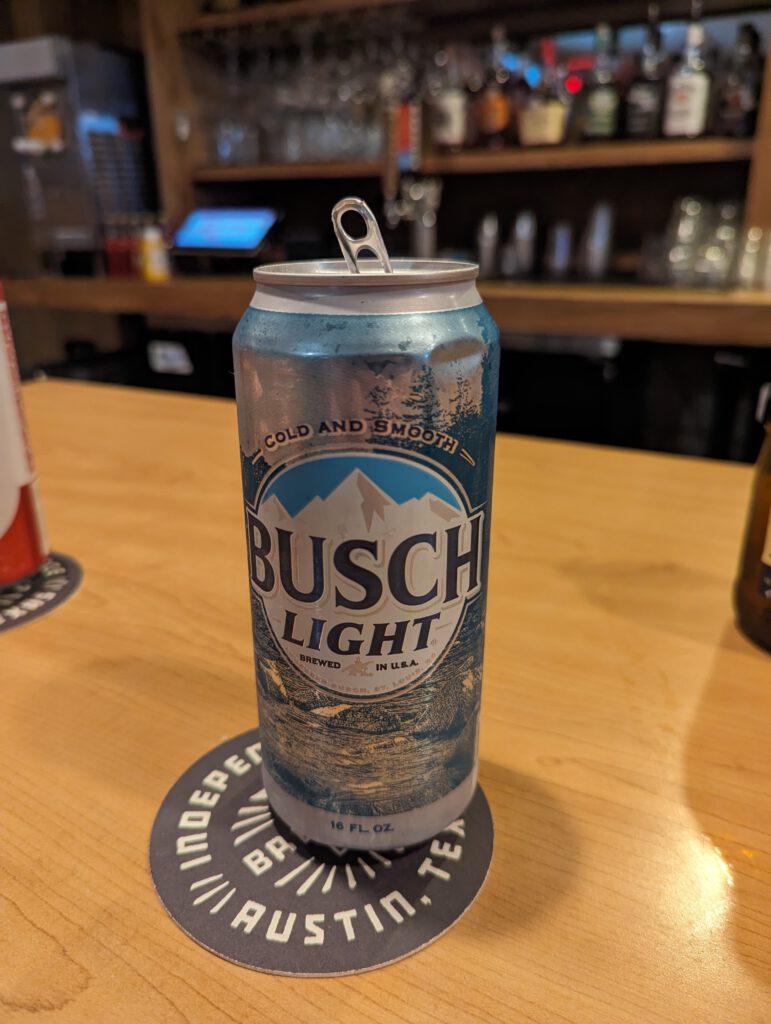

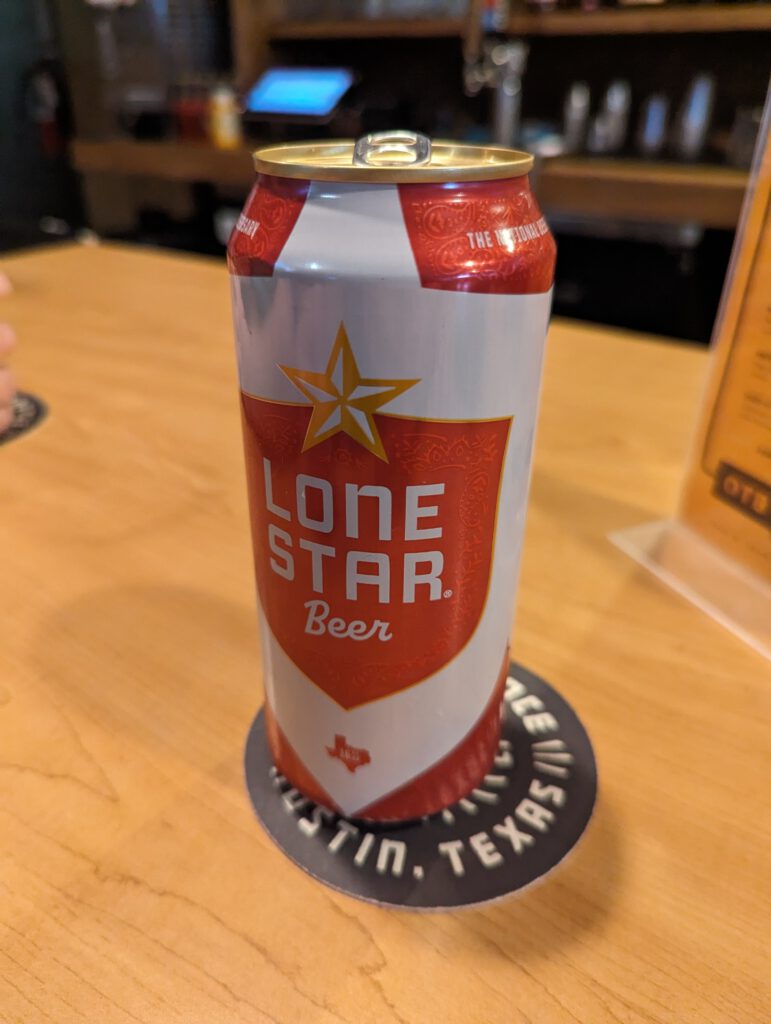
Trillium – Fenway, Boston
After our great baseball experience in Chicago, we wanted to see even more baseball, so we spontaneously bought some ticket for Fenway Park, to watch the Red Sox play Phillies. Our pre-game stop for drinks was the Trillium bar at Fenway. Lots of Red Sox fans hanging out there. The beer was fine but was served in plastic cups. My favourite was probably the nitro dark mild at 2.8% ABV, but at $8 for a pint, it does not feel like you’re getting good value. Also, I don’t particularly care about a menu of 8 sours and 12 IPAs.
Jack’s Abby House Lager at Fenway Park
Jack’s Abby House Lager is a pretty good Bavarian-style Helles, but brewed locally just outside of Boston. Available in cans at Fenway Park, it’s probably the best beer option in the whole stadium. We unfortunately did not make it to Jack’s Abby’s taproom/brewery ourselves, so having cans of their House Lager at least partially made up for it.

A Lagery Tour through Somerville
Somerville is located just outside of Boston, while fully connected through public transport, in particular the Green Line (they call it a train, but it’s really a tram). That’s where we met our friend Chris and his wife for drinks on our last full day in Boston. I’ve known Chris for 7 years or so, as he’s one of the original members of our Stammtisch in Berlin. Chris is a Canadian diplomat, and spent time in Munich (where we had last met him January 2020, just before COVID broke out properly) before being posted in Boston.
Like us, Chris very much likes his lager beers, so he decided to show us the best spots around his area. We started off at Olde Magoun’s Saloon, an Irish-themed pub with a particularly good beer selection. I started off with Sacred Profane‘s Pale Lager (another brewery I would have liked to visit, but it was just a tiny bit too far out from Boston) which was an absolutely solid pale lager with a strong reminiscence of Czech beer (I bet it tastes even better at the brewery when served as tank beer).
My second beer was Schilling Jakobus, an excellent German-style Pilsner of yet another brewery I would have liked to visit, but couldn’t make. I would have loved to try Volksgarten, their Vienna Lager (also based on information from my book), but couldn’t see it anywhere in or around Boston.
Louise started off with Hofbräu Helles and continued with a locally brewed cask bitter (served from hand pumps, of course) that tasted light and fruity but was visually slightly underwhelming since it was unfined.
We then continued to Aeronaut Brewing, a short Uber ride away, because Chris said we specifically needed to try their Czech Dark Lager (a style about which I have opinions). Unfortunately, it wasn’t quite up to my taste: too roasty, a bit too thin, just lacking overall body, and more like a bottom-fermented stout. The atmosphere in the outside seating area was nice and relaxed, but still busy enough.
One beer was enough there for us, so we went on to Remnant Brewing for another recommendation Chris had for us: Hella Crispy, a Corn Lager. Honestly, I could not taste any corn in this beer, but what I could taste seemed like a pretty good Czech-style pale lager with a firm bitterness and a very clean hop aroma, good body, super crushable. We only stayed for one last beer until we headed home.
An Attempt at a Summary
The United States has lots of good beer. The stereotype these days is that it’s either macro lagers or hazy IPAs, pastry stouts and fruited sours. If neither of that is to your liking, you will always been acceptable lager options, and if you look around a bit, you will come across some very good or sometimes even excellent lager of all kinds of styles. What still impresses me the most is the variety: whenever a brewery brews lager beers, and focuses on it, you will be able to drink a broader spectrum of beer styles than anywhere in Germany, in a quality close to or equal to some of the best breweries here.
I just hope I’ll be able to make it back to the US just to enjoy all that great beer.
